How to Improve the Capacity and Efficiency of Meat Processing Equipment
Introduction
Enhancing the capacity and efficiency of meat processing equipment is crucial for boosting the competitiveness of enterprises. This involves various aspects, including the equipment itself, operational processes, personnel skills, and overall management. Below are some key strategies and methods for improvement.

1. Optimize Existing Equipment Performance
Optimizing existing equipment is the foundation for improving capacity and efficiency, often achieving significant improvements at a relatively low cost.
Regular Maintenance and Upkeep
Establish a comprehensive equipment maintenance plan, including daily, weekly, monthly, and annual maintenance.
Strictly follow the equipment manufacturer's guidelines for lubrication, cleaning, and inspection.
Replace worn or aging parts promptly to prevent minor issues from escalating into major failures that cause downtime.
Maintenance Points for Different Equipment:
- Cutting Equipment (Slicers, Dicers, Knives): In addition to lubrication and cleaning, focus on blade wear, cutting gap adjustments, and the effectiveness of safety devices. For example, even minor blade imbalances or wear in high-speed slicers can lead to reduced cutting quality and efficiency.
- Grinding Equipment (Grinders): Regularly check the sharpness of the grinding plates and knives to ensure grinding effectiveness and speed. Pay attention to the lubrication of motor bearings and the normal operation of the cooling system.
- Mixing Equipment (Mixers): Inspect the wear and deformation of the agitator blades to ensure mixing uniformity. Monitor the operating status of the motor and reducer to avoid overloading.
- Stuffing Equipment (Stuffers): Regularly check the cleanliness of the hopper to ensure stuffing accuracy and speed. Focus on the wear of pistons or screws.
- Cooking Equipment (Cookers, Ovens, Smokers): Check the accuracy of the temperature control system to ensure even and efficient cooking. Clean the furnace and flue system to prevent carbon buildup from affecting efficiency.
- Packaging Equipment (Packaging Machines): Check the sealing effect and temperature control of the sealing machine to ensure packaging quality and speed. Pay attention to the film conveying and tension control systems.
Computerized Maintenance Management System (CMMS):
Introducing a CMMS can help businesses better plan, track, and manage maintenance activities, achieving preventative maintenance and reducing unexpected downtime.
Precise Calibration
Regularly calibrate key equipment such as cutting, weighing, and packaging machines to ensure their accuracy and precision, reducing product loss and rework.
Use professional calibration tools and technicians to perform operations.
Examples and Methods:
- Weighing Equipment Calibration: Inaccurate weighing can lead to overweight or underweight products, directly affecting the company's profits and customer satisfaction. Electronic scales and automatic weighing packaging machines should be regularly calibrated using standard weights.
- Cutting Equipment Calibration: For example, the precise calibration of the dicing machine's blade grid spacing and cutting thickness directly affects the product's specifications and consistency.
- Temperature Control System Calibration: Inaccurate temperature control in cooking equipment can affect product quality and safety. Calibrated thermometers should be used to regularly check and calibrate temperature control systems.
Calibration Frequency:
The calibration frequency should be determined based on the equipment's usage frequency, accuracy requirements, and the manufacturer's recommendations.
Blade Sharpness and Replacement
Keeping the blades of cutting equipment sharp can improve cutting efficiency, reduce meat damage, and enhance product quality.
Establish a blade sharpening and replacement plan, selecting appropriate blades based on usage frequency and meat type.
Train employees on the correct use and maintenance of blades.
Materials and Techniques:
- Blade Materials: Different meat processing may require blades made of different materials, such as high carbon steel and stainless steel, to ensure sharpness and durability.
- Sharpening Techniques: Train employees on proper sharpening techniques or use professional sharpening equipment. For some special blades, it may be necessary to outsource to professional sharpening service providers.
- Replacement Plan: Develop a clear blade replacement plan based on the cutting volume, meat type, and blade material to determine the replacement cycle.
Conveyor Belt and Transportation System Optimization
Regularly check the tension, wear, and alignment of conveyor belts to ensure smooth material transportation.
Clean residues on the conveyor belts to prevent cross-contamination and reduced efficiency.
Optimize the layout of the transportation system to reduce material handling distance and time.
Types and Maintenance:
- Different Types of Conveyor Belts: Common conveyor belts in meat processing include modular plastic belts, stainless steel mesh belts, PVC belts, etc., each with different maintenance requirements. For example, modular plastic belts need regular inspection of module connections and wear, while stainless steel mesh belts need attention for fractures or deformations.
- Tension Adjustment: Excessive or insufficient conveyor belt tension will affect efficiency and lifespan. Adjust according to the manufacturer's guidelines.
- Cleaning and Lubrication: Regularly clean conveyor belts to remove meat scraps and grease. The drive components of some transportation systems require regular lubrication.
Automation Upgrades
Consider upgrading existing semi-automatic equipment, such as adding automatic feeding and unloading functions.
Introduce sensors and control systems to achieve more precise control and operation.
Examples and Benefits:
- Automatic Feeding Systems: Adding automatic feeding devices to cutting machines, grinders, and other equipment can reduce manual operation, improve efficiency, and ensure consistency.
- Automatic Unloading Systems: After processing is complete, use robotic arms or automated conveyor belts to automatically transfer products to the next stage.
- Sensors and Control Systems: Adding sensors, such as weight sensors and size sensors, to existing equipment and connecting them to control systems can achieve more precise control and operation, such as automatically adjusting cutting speed or thickness.
2. Strategic Equipment Upgrades and Selection
When existing equipment cannot meet production capacity needs or is inefficient, strategic equipment upgrades and selection are crucial.
Identify Production Bottlenecks
Analyze the production process to identify critical links and equipment that limit capacity.
Through data collection and analysis, understand the efficiency of each link and potential areas for improvement.
Methods and Tools:
- Value Stream Mapping: Identify waste and bottlenecks by mapping the production flow.
- Time Studies: Measure the time taken for each production step to identify time-consuming processes.
- Capacity Analysis: Analyze the theoretical and actual capacity of existing equipment to find gaps.
- Process Simulation: Use software to simulate production processes and predict the capacity and efficiency of different equipment configurations.
Invest in Higher Capacity Equipment
Based on future production needs, consider replacing equipment with higher processing capabilities and faster speeds.
For example, replacing a grinder that processes 500 kg per hour with one that processes 1500 kg per hour.
Replacing a single-lane packaging machine with a multi-lane high-speed packaging machine.
When selecting equipment, fully consider future capacity growth needs to avoid facing equipment bottlenecks again in the short term.
Adopt Continuous Processing Systems
Consider adopting highly automated continuous processing production lines, such as continuous marinating systems and continuous cooking systems, to replace traditional batch processing methods.
Continuous processing can significantly improve production efficiency and product consistency.
Technology and Applications:
- Continuous Brining Systems: Use injection or tumbling to complete the marinating of meat products during continuous conveying.
- Continuous Cooking Systems: Such as tunnel ovens and steam heating channels, to cook products during continuous conveying.
- Continuous Chilling Systems: Use media such as cold air or liquid nitrogen to rapidly cool products during continuous conveying.
Choose Equipment with Shorter Cycle Times
When selecting new equipment, pay attention to the equipment's cycle time and choose equipment that can complete the same task in a shorter period.
When evaluating equipment, consider both its processing speed and the time required for loading and unloading.
For packaging machines, the cycle time includes the time for filling, sealing, and cutting.
Choose equipment that minimizes non-production time as much as possible.
Evaluate Equipment Footprint
In a limited factory space, choose equipment with a compact structure and reasonable layout to optimize the space utilization of the production line.
Use 3D layout software for production line planning to optimize equipment layout and reduce material handling distance.
Consider the maintenance space and operating space of the equipment.
3. Optimize Processing Flows and Workflows
Simply having advanced equipment is not enough; efficient processing flows and workflows are necessary to truly unleash the equipment's potential.
Material Flow Optimization
Design a reasonable production line layout to ensure smooth flow of raw materials, semi-finished products, and finished products, avoiding crossing and congestion.
Adopt advanced material handling equipment, such as automated guided vehicles (AGVs) and elevators, to reduce manual handling.
Design Principles and Tools:
- Straight-Line Principle: Try to make materials flow in a straight line to reduce backflow and crossing.
- Shortest Distance Principle: Shorten the material handling distance to reduce time and labor costs.
- Gravity Principle: Utilize gravity as much as possible for material transportation.
- Advanced Material Handling Equipment: For example, use elevators to transport raw materials to processing equipment at higher elevations, and use automated conveyor belts to transfer semi-finished products from one stage to another.
Minimize Downtime
Develop a detailed equipment maintenance plan and strictly implement it to reduce unexpected downtime caused by equipment failures.
Optimize equipment replacement and adjustment processes to shorten changeover times.
Establish a rapid response maintenance team to promptly resolve equipment issues.
Strategies and Tools:
- Predictive Maintenance: Use sensor data and analysis tools to predict potential equipment failures and perform maintenance before they occur.
- Quick Changeover: Implement methods such as SMED (Single-Minute Exchange of Die) to shorten the time for equipment to switch between product specifications or batches.
- Spare Parts Management: Establish a comprehensive spare parts inventory management system to ensure timely supply of critical components.
Standardize Operating Procedures
Develop clear and detailed operating procedures and train employees to ensure all operators follow standard procedures.
Standardization can reduce human errors, improve equipment operating efficiency, and enhance product quality.
Methods and Benefits:
- Standard Operating Procedures (SOPs): Write clear and detailed operating instruction manuals and update them regularly.
- Visual Management: Use charts, Kanban boards, and other visual tools to display operating procedures and key parameters.
- Pre-job Training and Continuous Training: Provide comprehensive operation training to new employees and regularly update the skills of existing employees.
Implement Data Collection and Analysis
Utilize sensors, Internet of Things (IoT) technology, etc., to collect equipment operating data, such as output, speed, energy consumption, and failure rate.
Analyze the data to identify inefficient links and potential improvement opportunities.
Use Key Performance Indicators (KPIs) to monitor production efficiency and equipment performance.
Indicators and Systems:
- Key Performance Indicators (KPIs): Such as processing time per unit product, equipment utilization rate, yield rate, energy consumption, etc.
- Data Collection Methods: Data can be collected manually, automatically by sensors, or by barcode scanning.
- Data Analysis Tools: Use tools such as Excel, SPC software, and MES (Manufacturing Execution System) for data analysis.
Employee Training and Skill Enhancement
Provide comprehensive training to operators on equipment operation and maintenance to improve their skills and troubleshooting abilities.
Conduct regular skill updates and safety training.
Content and Forms:
- Equipment Operation Training: Including the working principle of the equipment, operating steps, and safety precautions.
- Maintenance Training: Including daily maintenance and simple troubleshooting.
- Food Safety and Hygiene Training: Ensure employees understand and comply with relevant food safety and hygiene regulations.
- Training Forms: Various forms can be adopted, such as classroom training, on-site guidance, and online learning.
4. Enhance Hygiene and Cleaning Efficiency
Efficient hygiene and cleaning procedures not only ensure food safety but also reduce downtime and improve production efficiency.
Implement Efficient Cleaning Procedures
Develop standardized and detailed cleaning and disinfection procedures to ensure compliance with food safety requirements.
Optimize cleaning processes to reduce cleaning time and water consumption.
Use efficient cleaning agents and tools.
Steps and Tools:
- Dry Cleaning: Remove as much solid residue as possible from equipment and floors before wet cleaning.
- Pre-Rinse: Rinse equipment surfaces with clean water to remove most of the soil.
- Detergent Application: Select appropriate detergents and use them according to the prescribed concentration and time.
- Rinse: Thoroughly rinse equipment surfaces with clean water to remove residual detergent.
- Disinfection: Use disinfectants to disinfect equipment surfaces.
- Drying: Dry equipment surfaces as much as possible to prevent microbial growth.
- Cleaning Tools: Use easy-to-clean and disinfect tools, such as high-pressure water guns and foam cleaners.
Consider Clean-in-Place (CIP) Systems
For certain equipment, such as pipes and tanks, consider using CIP systems for automated cleaning to reduce manual intervention and improve cleaning efficiency and effectiveness.
CIP System Components and Advantages:
- CIP System Components: Typically includes cleaning fluid storage tanks, pumps, valves, spray heads, piping, and control systems.
- CIP System Advantages: High degree of automation, stable and reliable cleaning effect, reduced manual operation, shortened cleaning time, and reduced consumption of water and chemicals.
Minimize Cleaning Downtime
Reasonably arrange cleaning times to minimize the impact on normal production.
Adopt quick disassembly and assembly designs.
Use automated cleaning equipment.
Planning and Technology:
- Reasonable Cleaning Schedule: Schedule cleaning work during production breaks or non-production hours.
- Quick Disassembly and Assembly Design: Choose equipment that is easy to disassemble and assemble to facilitate cleaning.
- Automated Cleaning Equipment: Use automated cleaning equipment such as automatic floor scrubbers and high-pressure cleaning robots.
5. Technology Integration and Innovation
Introducing advanced technology is an important driving force for improving the capacity and efficiency of meat processing equipment.
Introduce Robotics and Automation
In links with high repetition and high labor intensity, such as cutting, sorting, and packaging, introduce industrial robots to improve efficiency and accuracy.
Automation can reduce labor costs and human errors.
Application Cases:
- Automatic Portioning and Deboning: Robots can precisely portion meat and remove bones, improving efficiency and yield.
- Automatic Trimming: Using visual recognition technology, robots can automatically trim excess fat and fascia.
- Automatic Boxing and Palletizing: Robots can quickly and accurately pack packaged products into cartons and palletize them.
Apply Computer Vision and Artificial Intelligence
Utilize computer vision technology for product quality inspection, grading, and foreign object identification.
Apply artificial intelligence technology to optimize production plans and predict equipment failures.
Quality Control and Optimization:
- Quality Inspection: Use computer vision technology to detect product color, size, shape, and surface defects.
- Fat Content Analysis: Quickly and accurately analyze the fat content of meat products through image analysis technology.
- Predictive Maintenance: Use AI to analyze equipment operating data, predict potential failures, and perform maintenance in advance.
- Demand Forecasting and Production Plan Optimization: Use AI to analyze historical data and market trends to optimize production plans and reduce inventory backlog.
Internet of Things (IoT) and Remote Monitoring
Through sensors and network connections, monitor equipment operating status, key parameters, and production data in real time.
Achieve remote fault diagnosis and predictive maintenance.
Data-Driven Decisions:
- Real-time Data Acquisition: Collect real-time data on equipment operating status, temperature, pressure, flow, etc., through sensors installed on the equipment.
- Remote Monitoring and Diagnosis: Managers can remotely monitor the operating status of the equipment through computers or mobile devices, and promptly identify and diagnose problems.
- Data Analysis and Reporting: Analyze the collected data and generate reports to provide a basis for management decisions.
6. Energy Efficiency
Improving energy efficiency can not only reduce the operating costs of enterprises but also contribute to environmental protection.
Choose Energy-Efficient Equipment
When selecting new equipment, consider the equipment's energy efficiency rating and energy consumption.
Technical Indicators:
- Pay attention to the energy efficiency rating label of the equipment.
- Choose motors equipped with variable frequency drives (VFDs) to adjust the motor speed according to actual needs, reducing energy consumption.
- Choose cooking and freezing equipment with good insulation performance to reduce energy loss.
Optimize Energy Usage
Reasonably arrange production plans to avoid prolonged idling of equipment.
Regularly inspect and maintain the electrical and refrigeration systems of the equipment to ensure their efficient operation.
Utilize natural light for illumination and reduce the use of artificial lighting.
Install intelligent lighting control systems to adjust lighting brightness according to actual needs.
Operating Specifications:
- Reasonably arrange production plans to avoid prolonged idling of equipment.
- Regularly inspect and maintain the electrical and refrigeration systems of the equipment to ensure their efficient operation.
- Utilize natural light for illumination and reduce the use of artificial lighting.
- Install intelligent lighting control systems to adjust lighting brightness according to actual needs.
Energy Audits
Conduct regular energy audits to identify areas with high energy consumption and develop corresponding energy-saving measures.
7. Reduce Waste and Utilize By-Products
Reducing waste in the production process and effectively utilizing by-products can significantly improve overall efficiency and sustainability.
Implement Waste Tracking and Analysis
Record and analyze the types and quantities of waste generated in different links to identify the root causes of waste.
Optimize Trimming Processes
Train employees on proper trimming techniques to minimize the waste of edible meat.
Explore By-Product Utilization
- Bones and Offal: Can be boiled to extract bone broth or processed into animal feed.
- Fat: Can be rendered to extract oil for industrial use or animal feed.
- Scraps: Can be used to produce minced meat or other low-value-added products.
- Cooperate with professional by-product processing companies.
Conclusion: Striving for Continuous Improvement
Improving the capacity and efficiency of meat processing equipment is a continuous improvement process that requires enterprises to make ongoing efforts from multiple dimensions, including equipment, processes, personnel, and technology. Through refined management, technological innovation, and attention to every detail, meat processing enterprises can stand out in the fierce market competition and achieve sustainable development. Remember that there is no overnight success; only continuous learning, practice, and innovation can ultimately achieve a leap in capacity and efficiency.
Must-Read Blogs For Chain Restaurants Owner

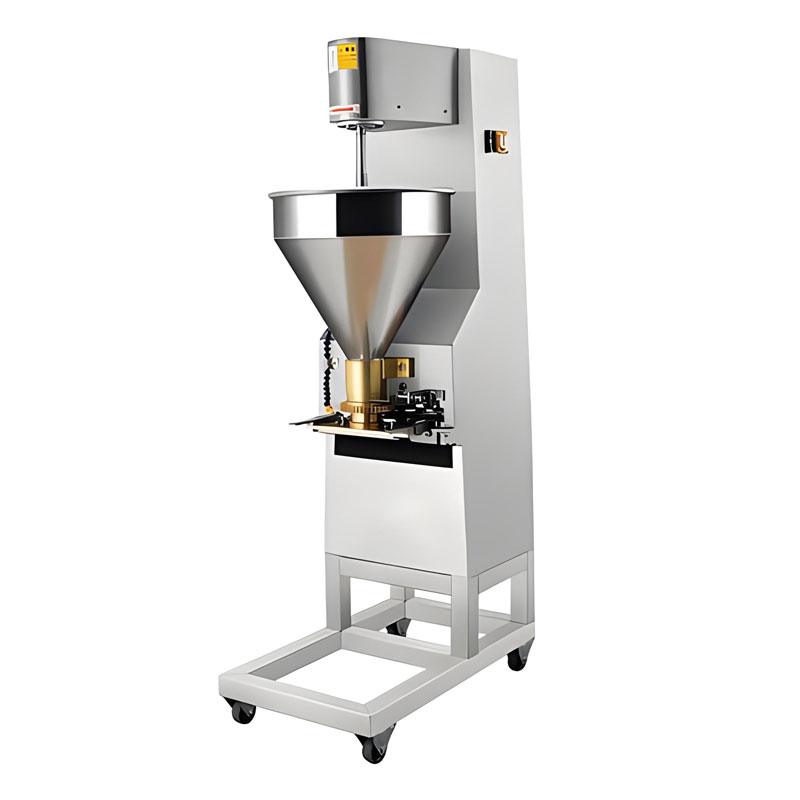
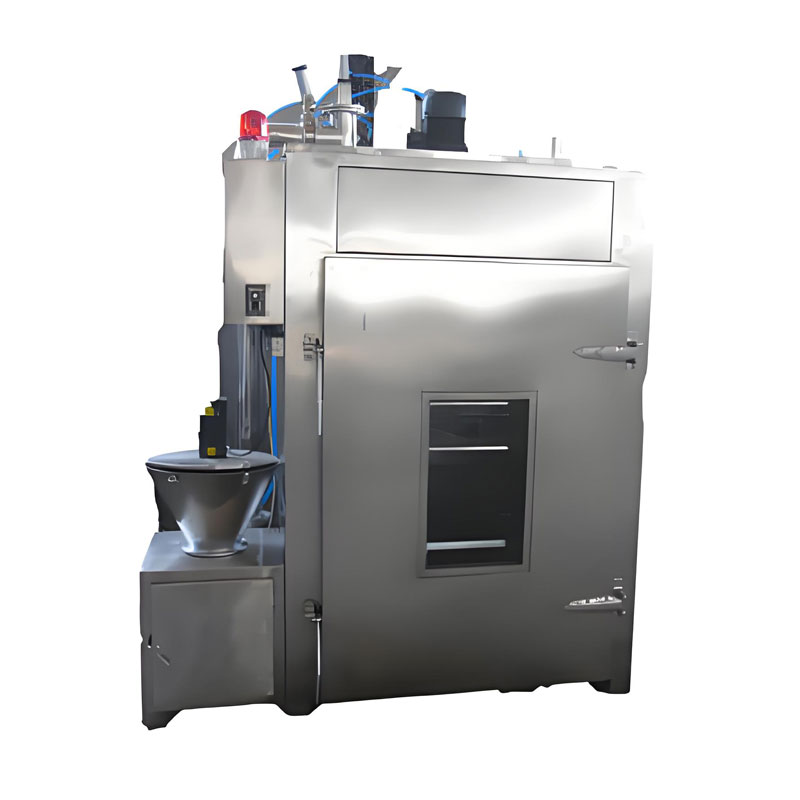
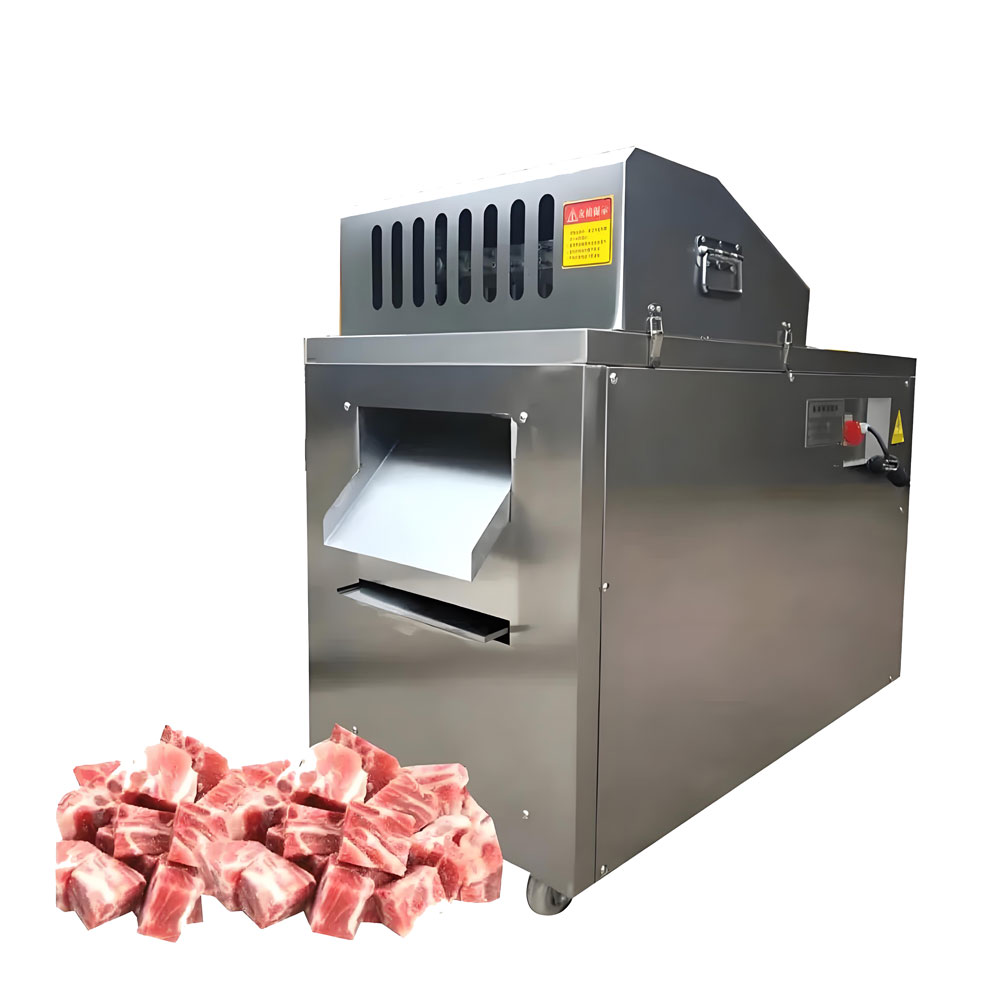
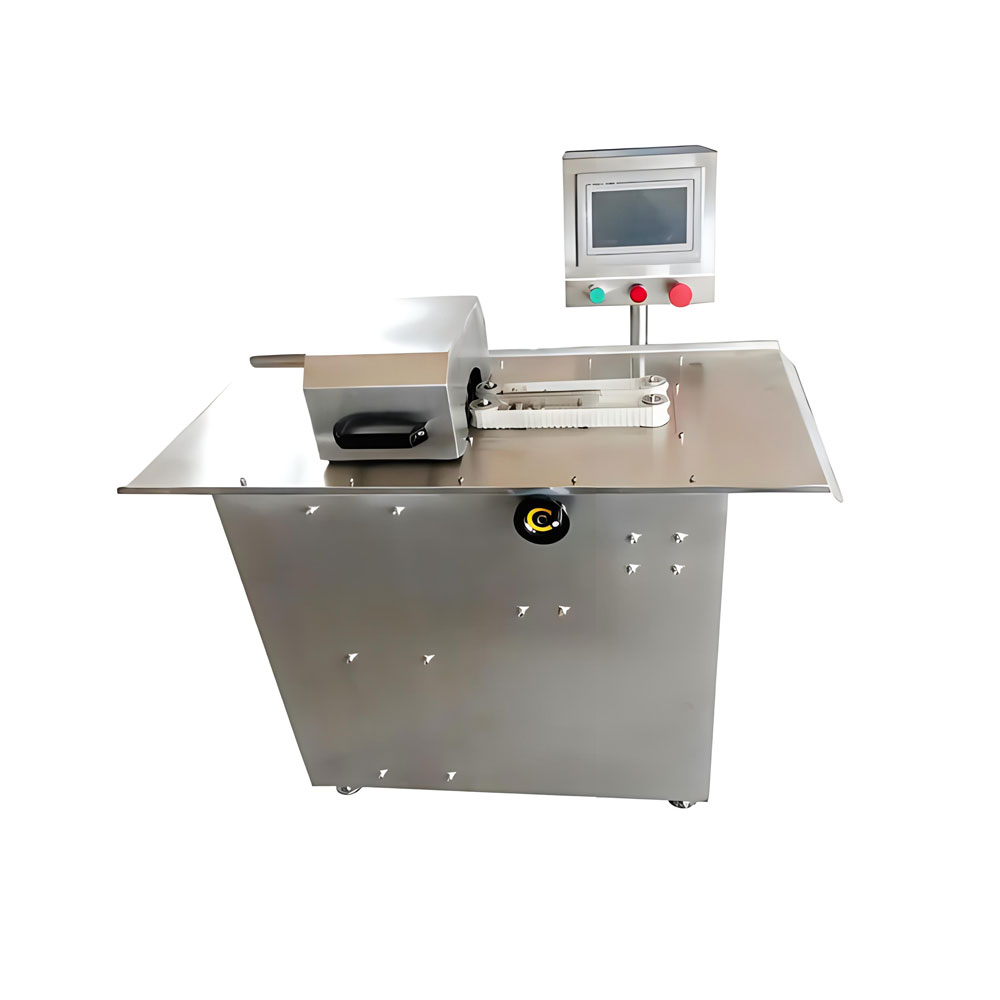
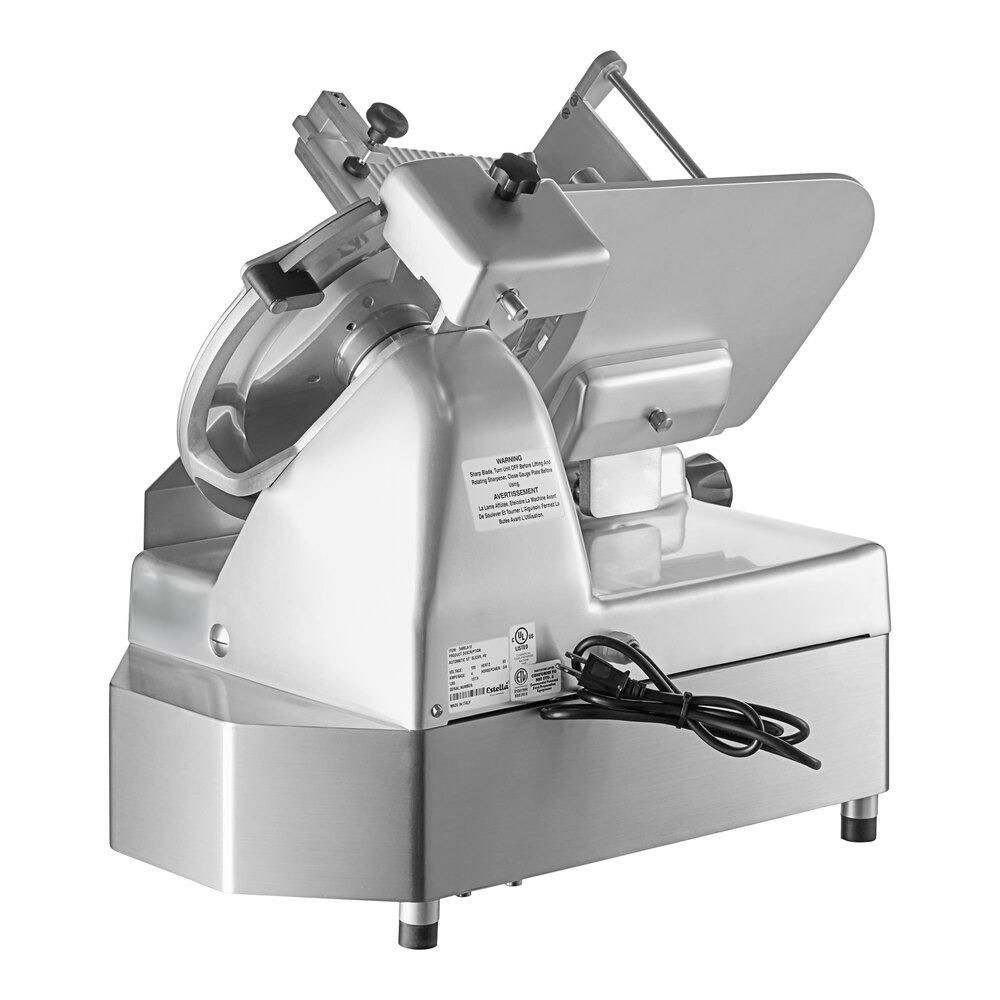
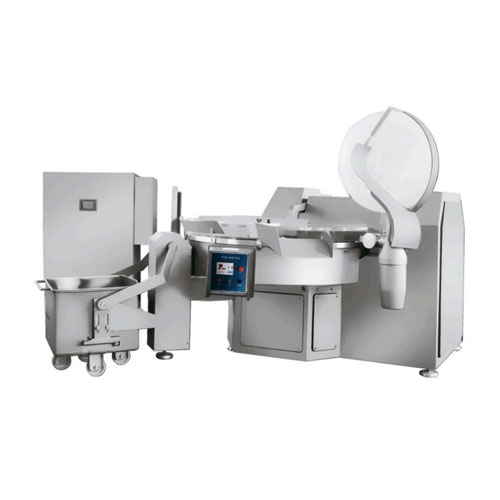
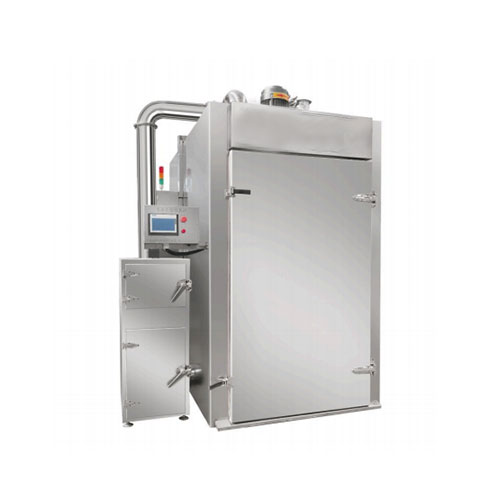
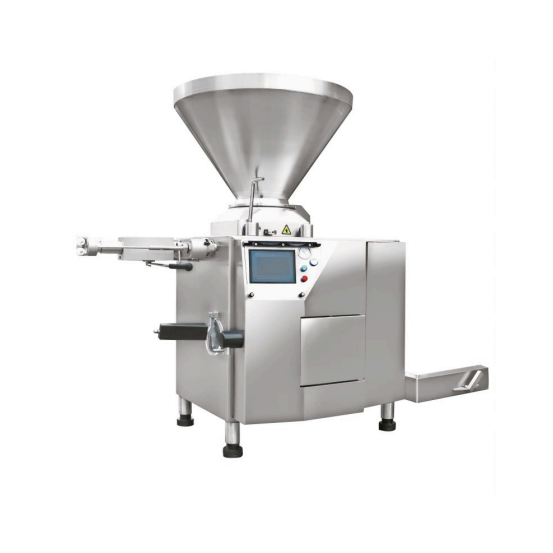
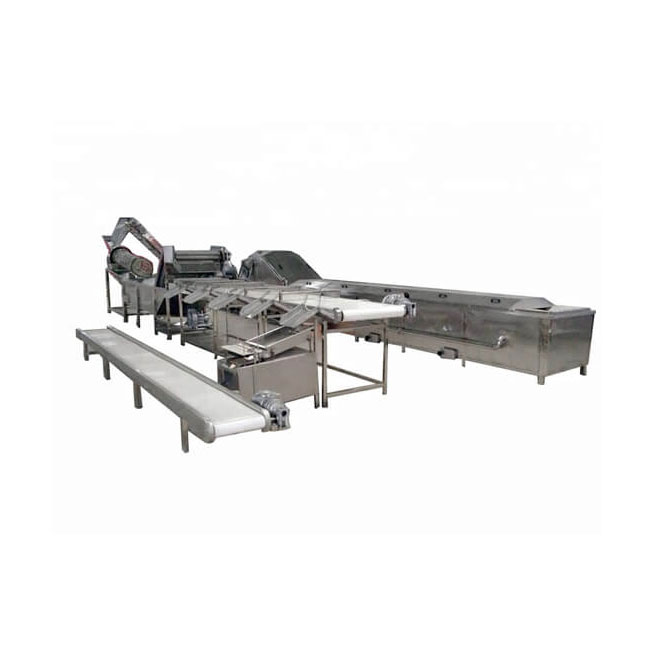
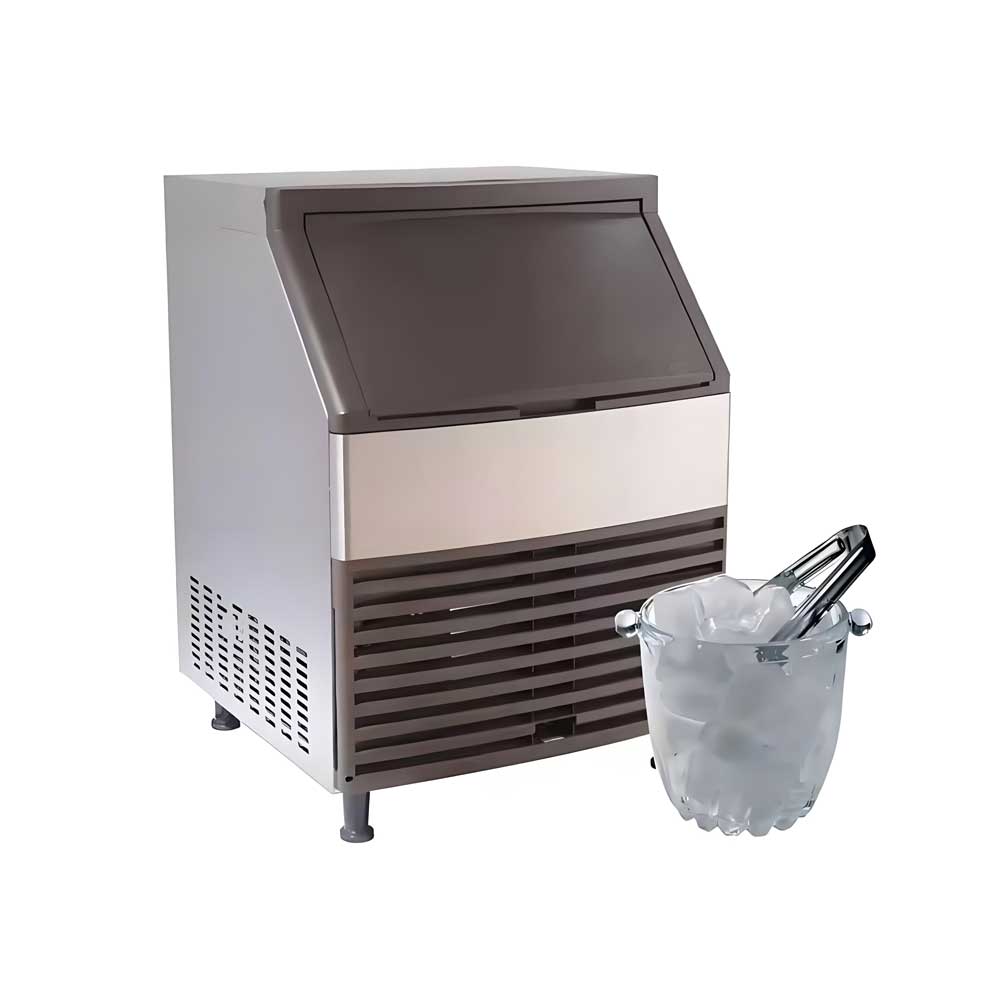
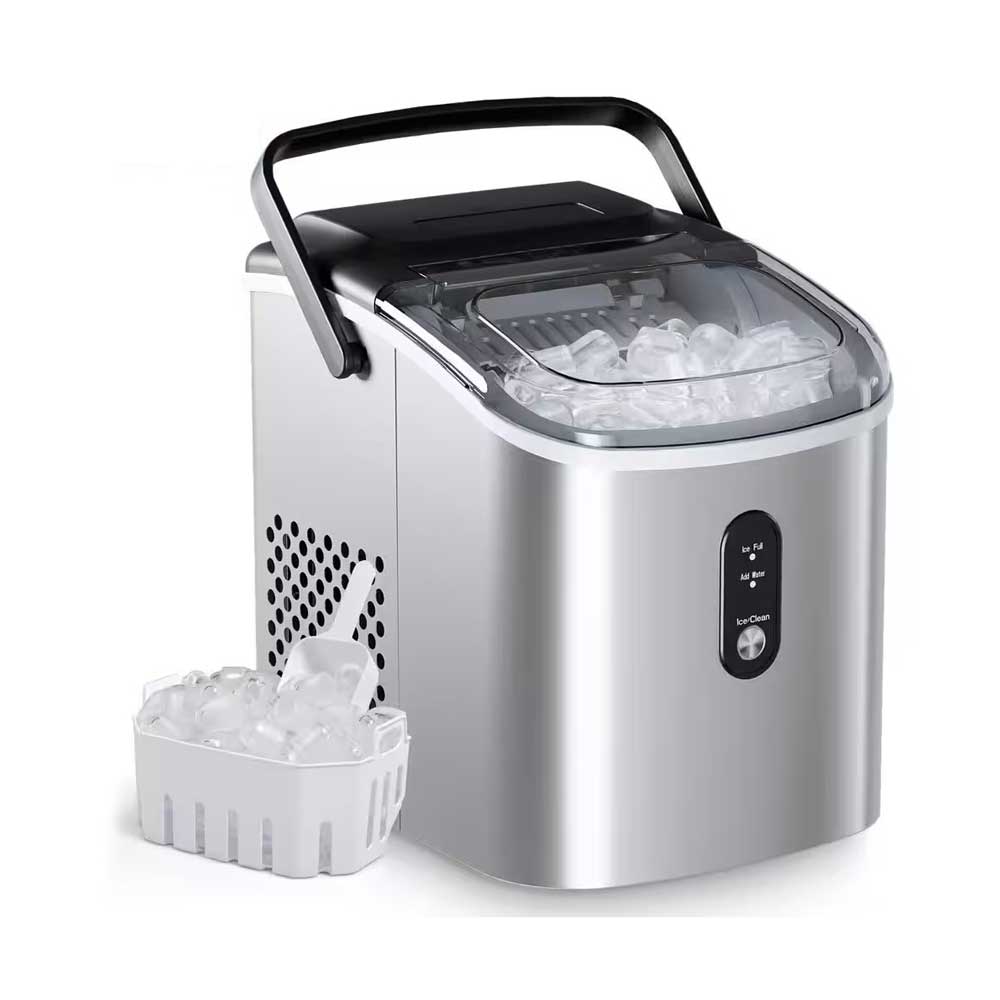 Portable Flake Ice Machine
Portable Flake Ice Machine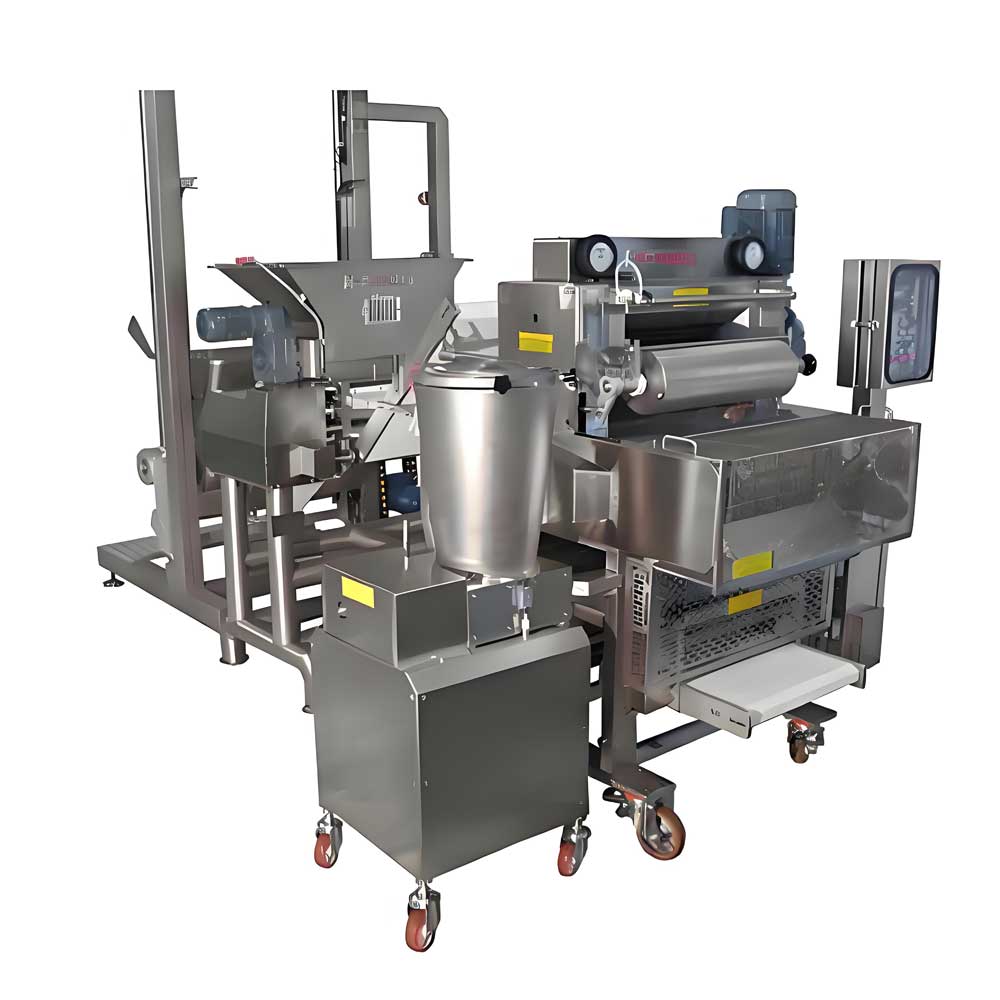 Pelmeni Making Machine
Pelmeni Making Machine
Ready to Get Started?